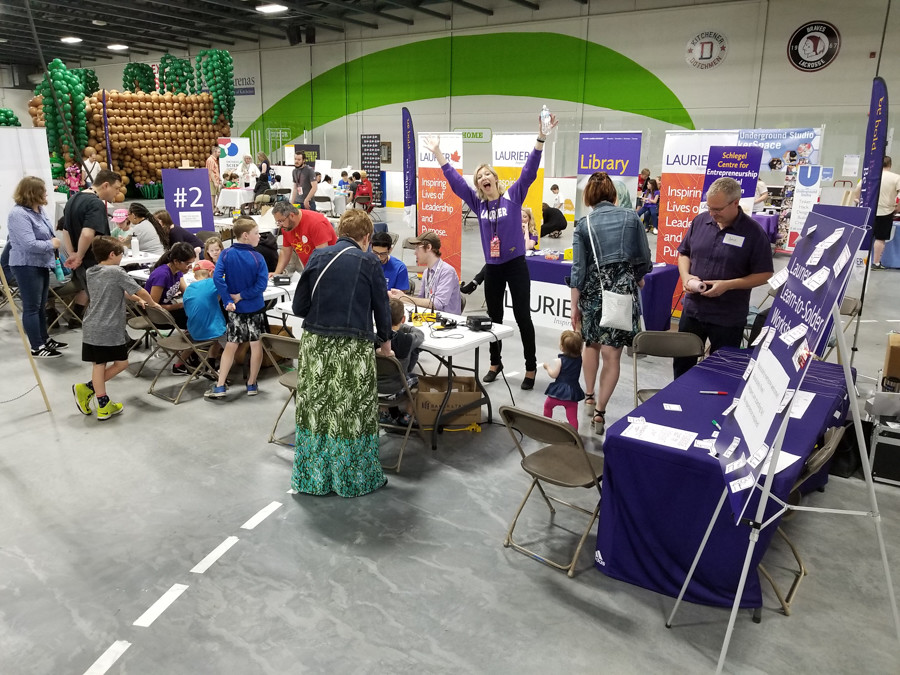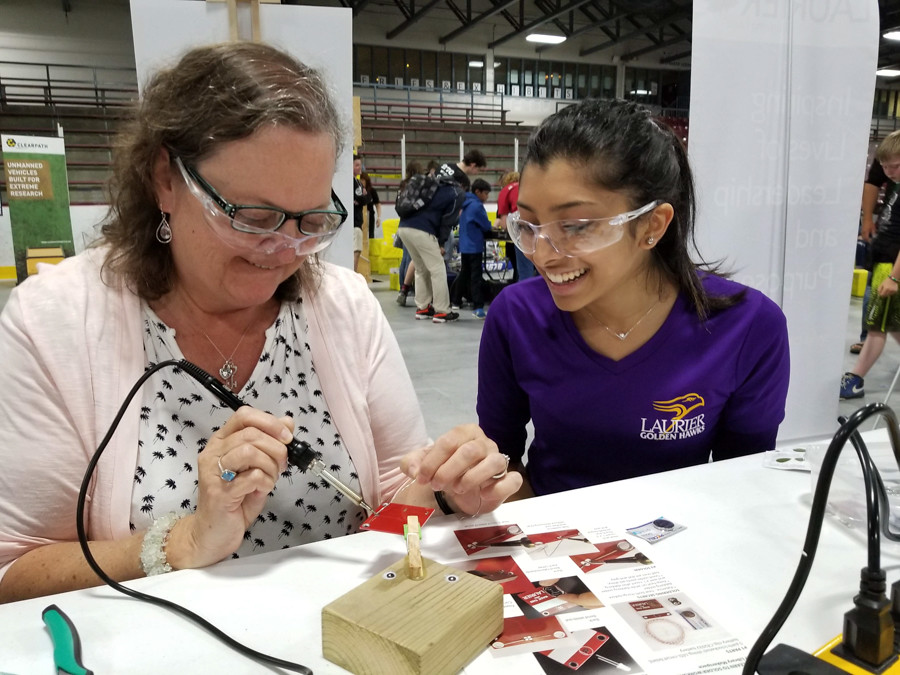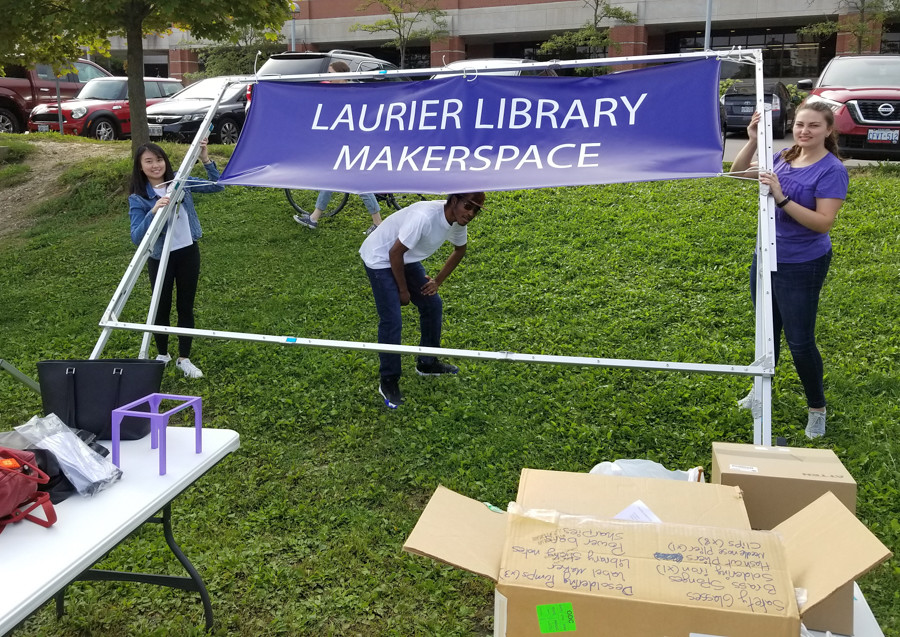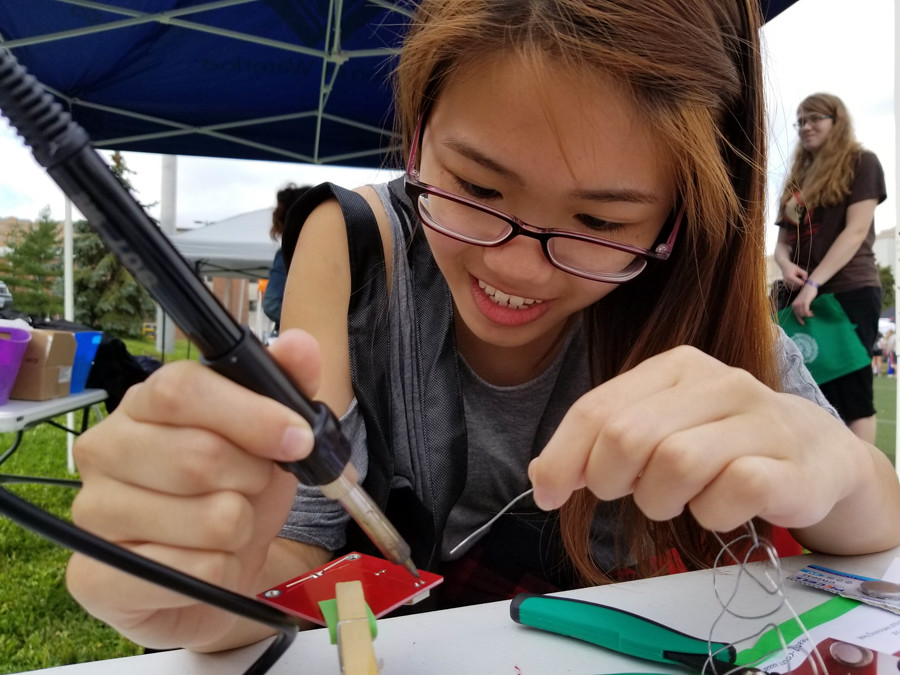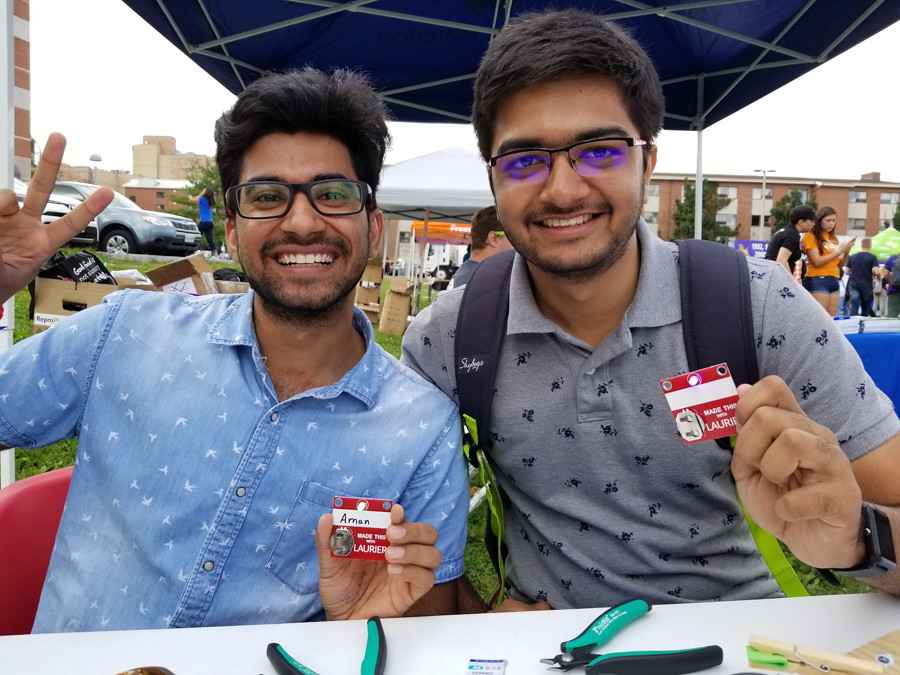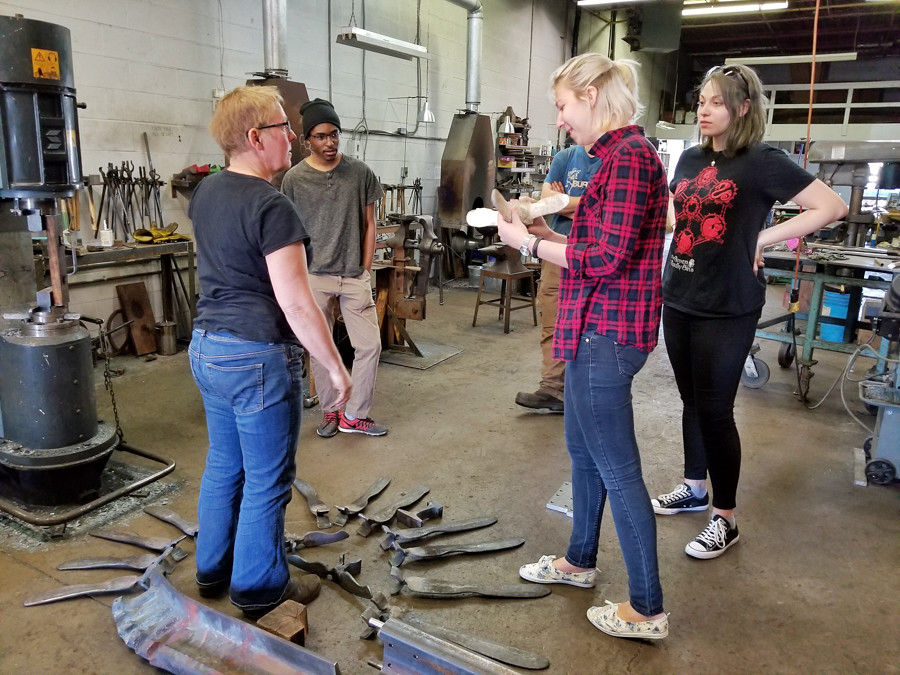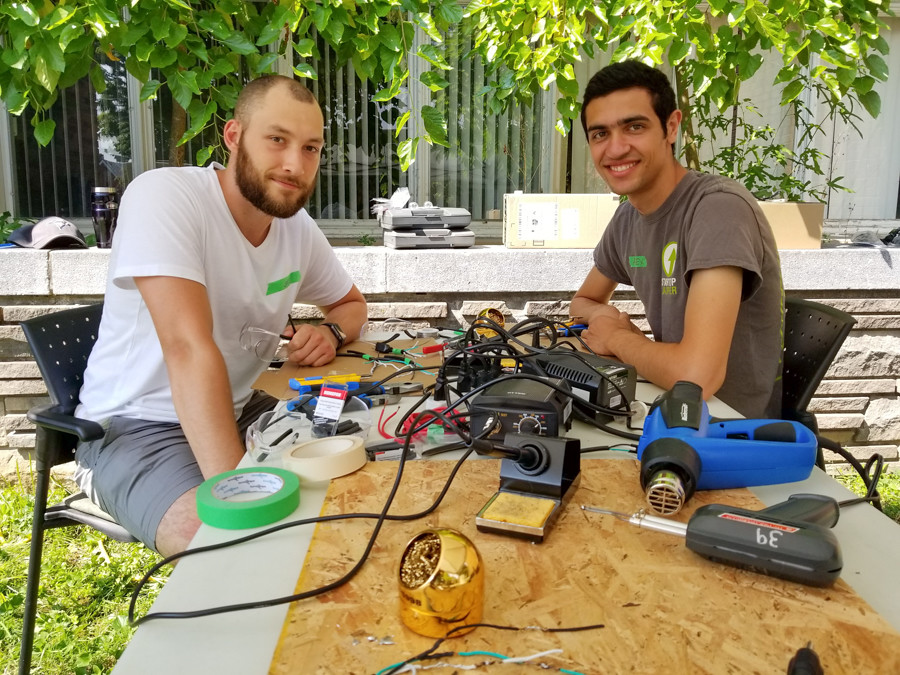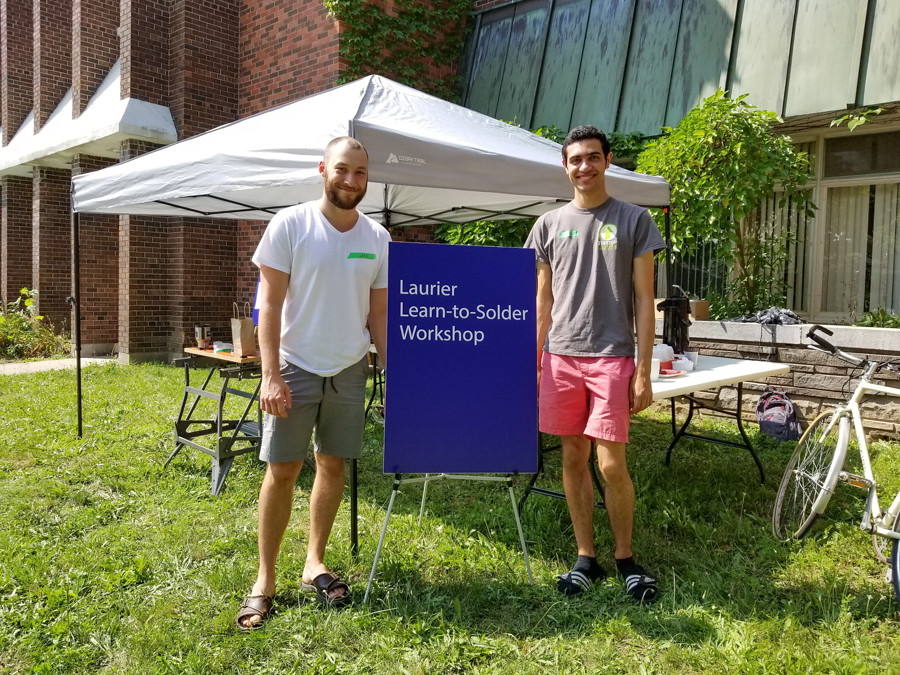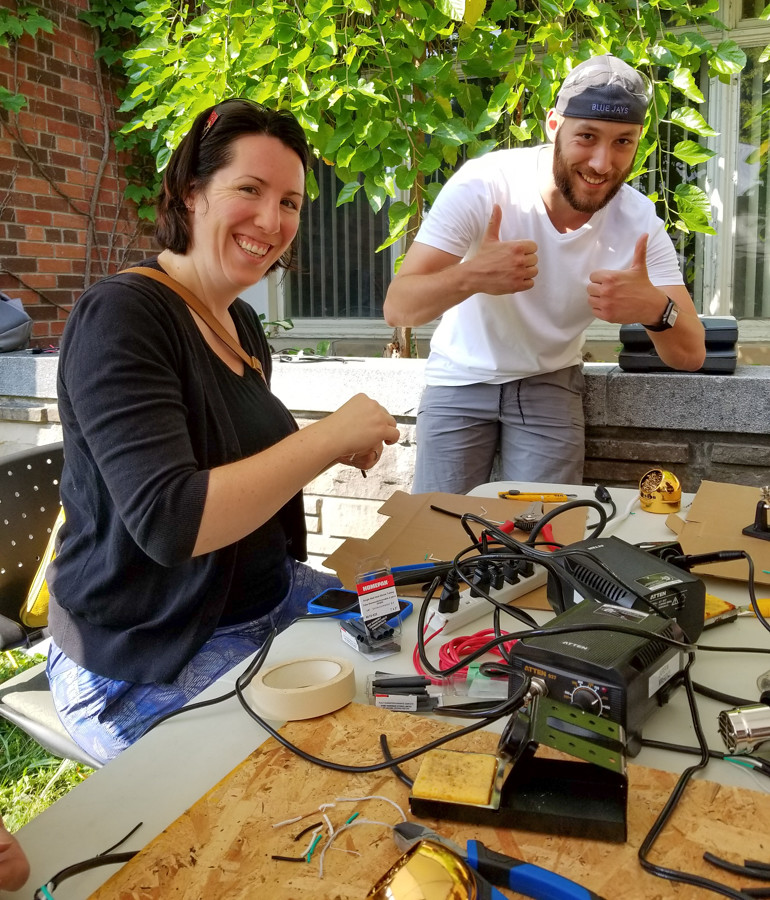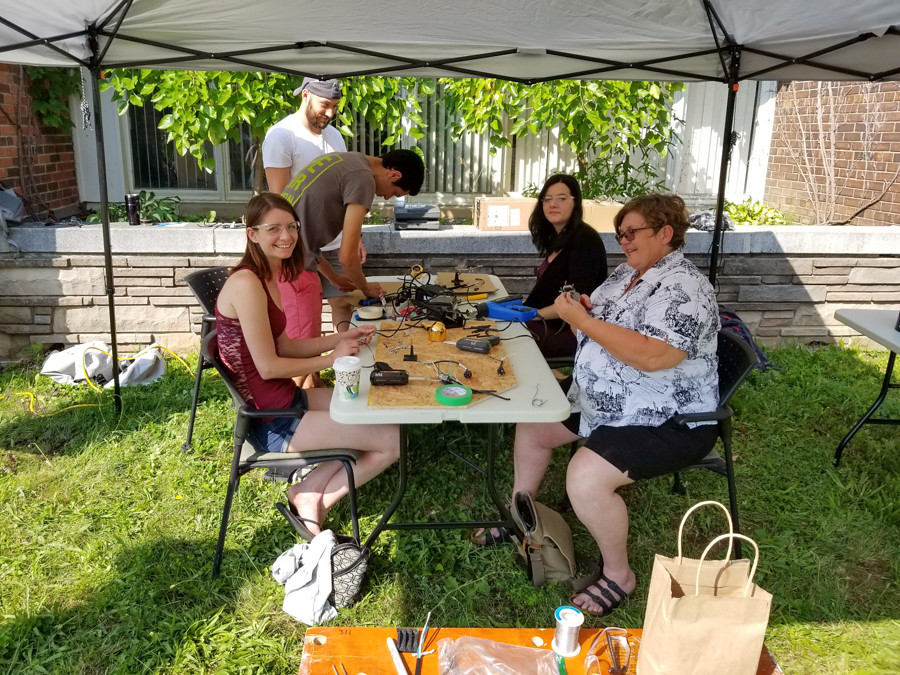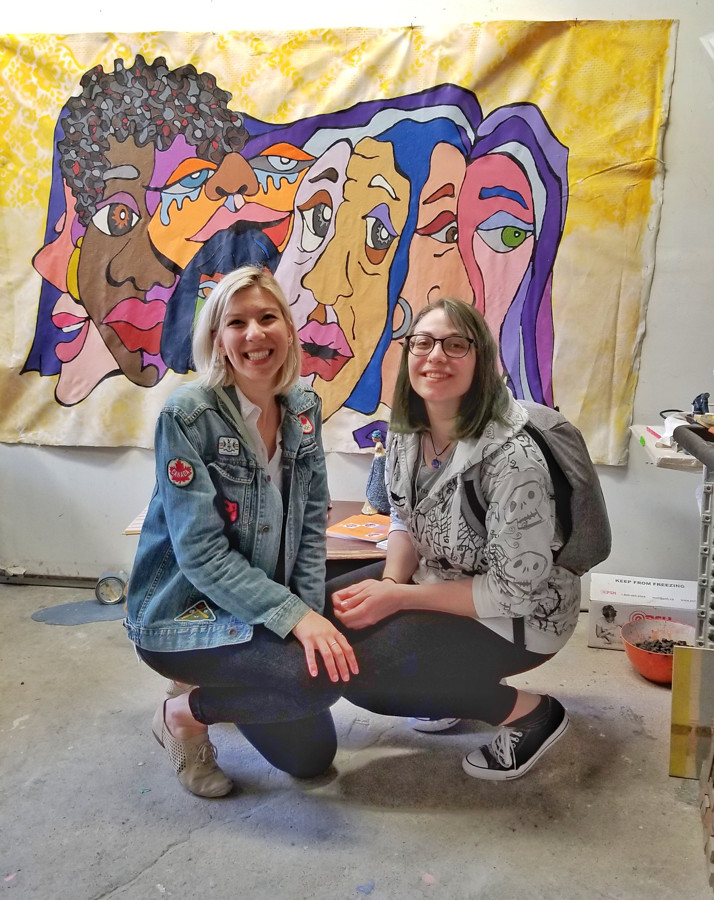Field notes from creating the Laurier Library Makerspace
One of the best things you can do in building your makerspace is to go beyond your own walls. While this might sound counterintuitive, building a makerspace is about building a community of people and practice. This pursuit is independent of any particular physical space. A robust makerspace effort prospers in a constellation of other makerly efforts.
Last June I took 15 student volunteers from our Laurier Library Makerspace down to the Kitchener Auditorium where we ran a free workshop for the community. Over this busy weekend at Maker Expo, we taught 522 people how to solder a small blinky badge.
It was a spectacular success. The students had a great experience teaching and meeting people in the community. It expanded our notion of what is possible as a group. The Maker Expo visitors connected with our Laurier students who were keen to help them learn a new skill.
Focus on the people
I apply a simple prioritization to resourcing any makerspace: 1. People 2. Tools 3. Space. When I consult on operating makerspaces, I often find that the priorities have been inverted and most of the funding has been committed to physical space. Before I arrived at Laurier I was part of the founding group for another local makerspace, kwartzlab. We learned in this effort that the space was a convenience, but the people were a necessity. So getting your community of makers outside their walls highlights what’s important: people.
Bind the group together
Here’s another example outside our walls. In a debrief after our first semester of operation, the students recognized that we needed to be more active in our outreach to first year students. Their plan was to engage at the Get Involved Fair in September, an event designed to welcome first year students to Laurier and to highlight the many extracurricular opportunities. With a lot of persistence we got on the map, planned, provisioned and ran our pop-up at the event. Julie, Alex and Madi raised our banner on the athletic field.
Result: we taught another 77 students how to solder and talked to several hundred more through the course of the day. Equally important: we again had an opportunity to work together on something big. We learned to trust and depend on each other. And we were bound together as a closer group.
Make new connections
Outside our walls again: Alex, Ola, Roula and I visited my friend Sandra Dunn of Two Smiths in Kitchener. Sandra is a blacksmith and coppersmith who blends art, craft and technology into her fantastic practice. All places of making are part of a collaborative constellation; we are not islands. I introduced these new makerspace student leaders to makers in the community so they could understand our makerspace in a broader context.
Connect and give to the community
In August Jake, Alex and I got outside our walls and supported the KW Library of Things with our Learn-to-Solder workshop. The Library of Things loans tools to community members and part of their mission includes teaching people how to use tools. My friend, the KW LoT coordinator, Juanita Metzger reached out to ask if we would run a workshop at their space in Kitchener. They had just received a donation of soldering tools. Again, we had a great experience contributing in the community.
Find new domains of making
Last May we took a trip to the artist-run Globe Studios in Kitchener for their spring show. I don’t get hung up on semantics of “artist” and “maker”. I just want us to all know each other.
I introduced Ola and Roula to artist Pam Rojas (her work in the background) and all the other artists up and down the hall. There were painters, jewellery makers and printers. We met people working in ceramics and photography. The disciplines practiced by these makers are outside the usual domain of the Laurier Library Makerspace. The discovery of new domains of making is another key benefit of exploring outside your walls.
Practically speaking
Do:
- Focus on people.
- Contribute to your community.
- Make new connections.
- Find new domains of making
Connect with me
You are invited to:
- Maker Mondays – a weekly 1pm-4:30pm drop-in time to visit the Laurier Library Makerspace
- Connect with me on LinkedIn – I graduate from my current role in September. I’m keen to continue building capacity in young adults.


